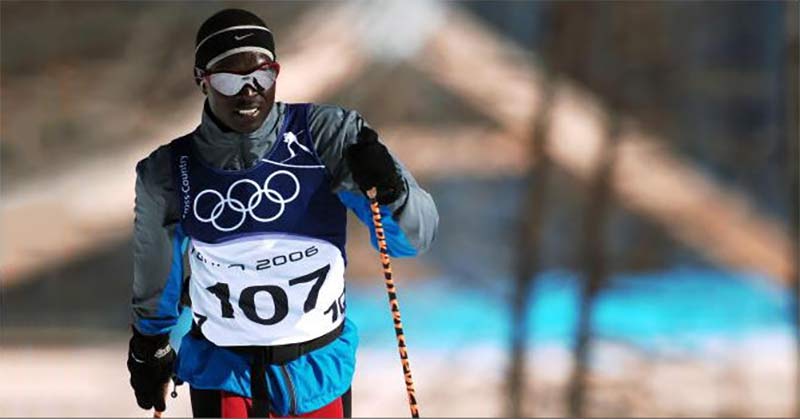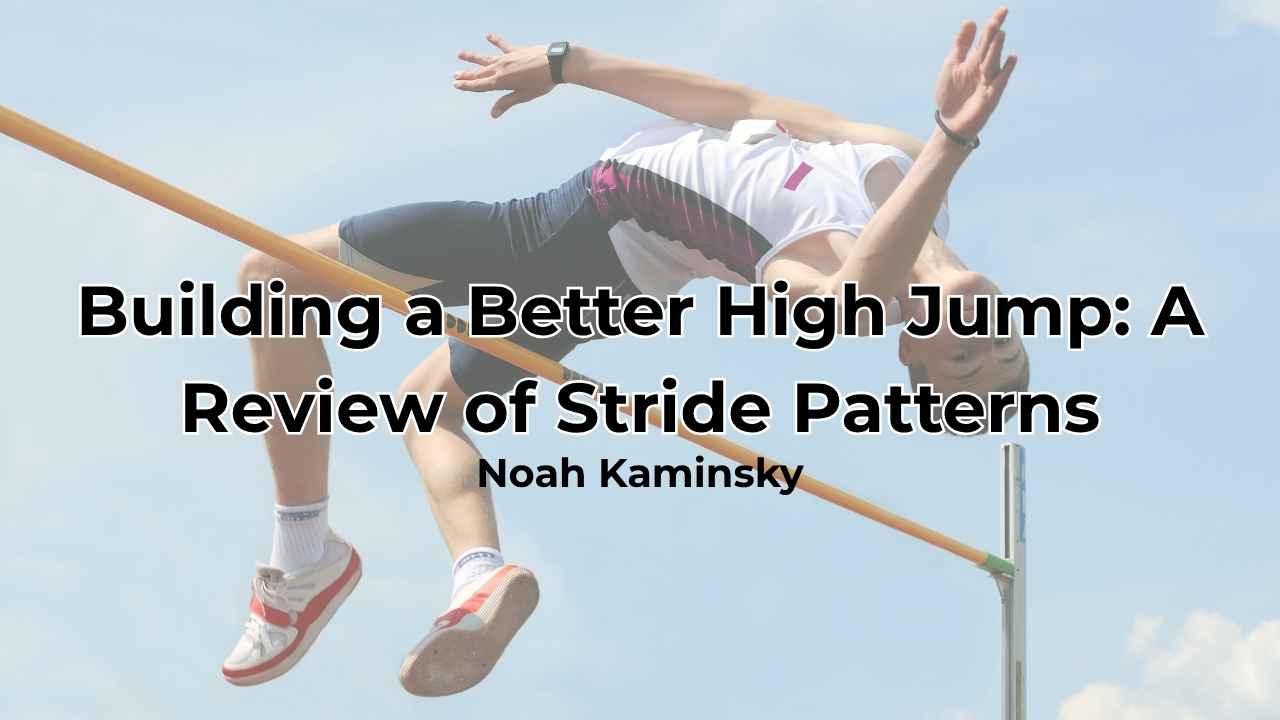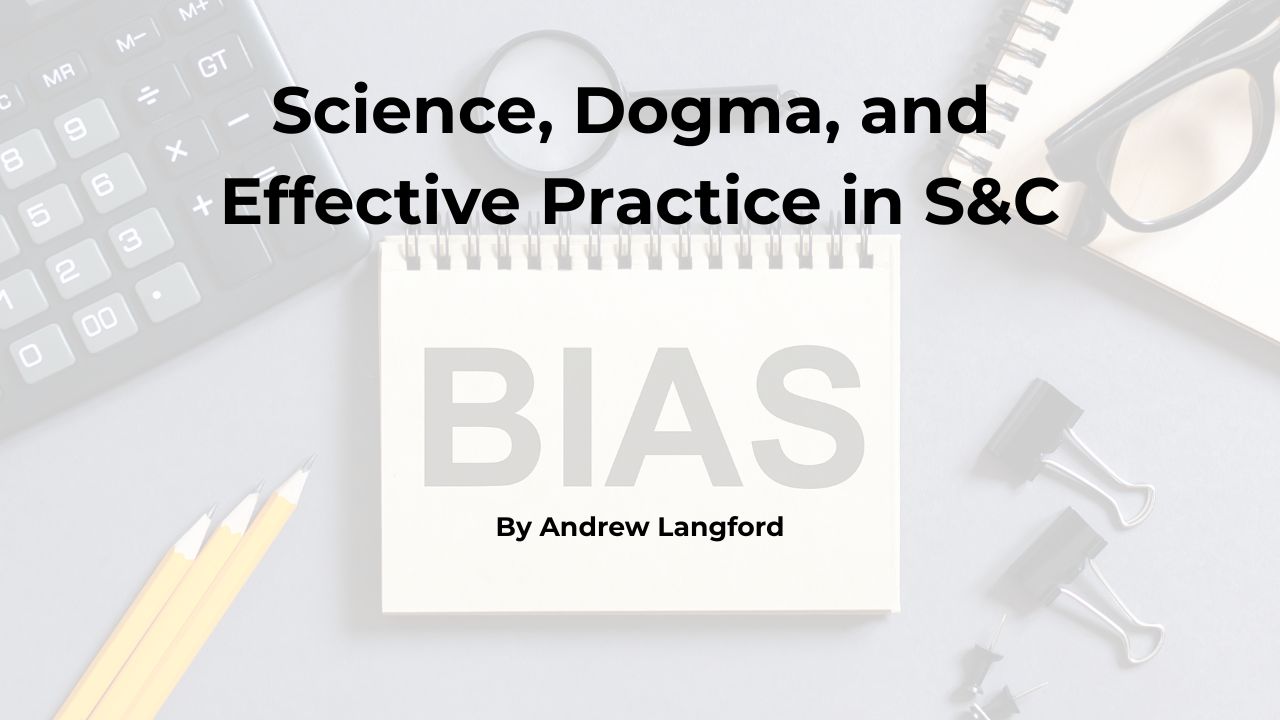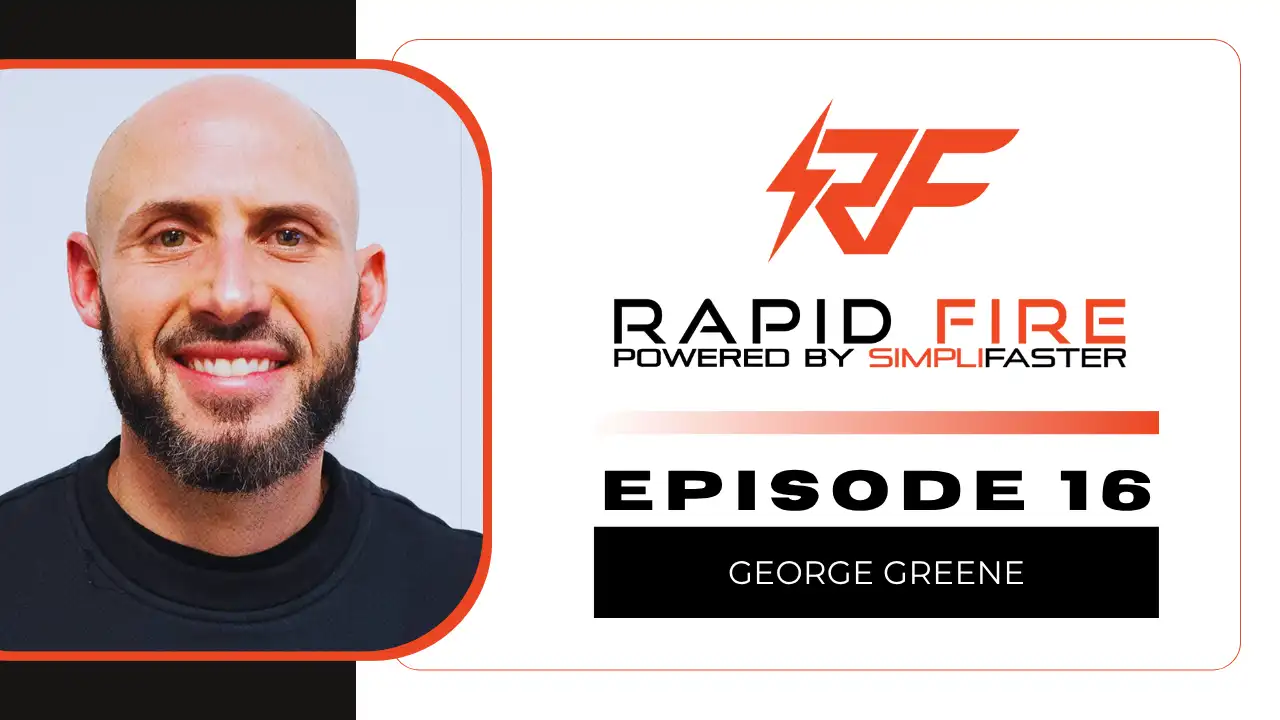[mashshare]
By Ken Jakalski
Distance runners need to train their nervous systems in a highly specific way if they hope to achieve their best possible performances. To understand the relationships among neurology, muscular coordination, and force applications, I followed the research path ignited by an elite Kenyan distance runner finishing dead last in the Olympics—not on the track but over the 10K ski trails around the Japanese village of Nozawa Onsen. And then I implemented a strength training program to increase the training volume for my runners while reducing their risk of injury.
Training the Nervous System
During my 42-year coaching career, I’ve had epiphany moments that changed my approach to training high school athletes—a sudden awareness regarding what legendary distance coach Percy Cerutty once described as the “mysteries of training.”
Highly respected author and coach Owen Anderson detailed his own revelatory moment in a 2001 seminar on distance running.
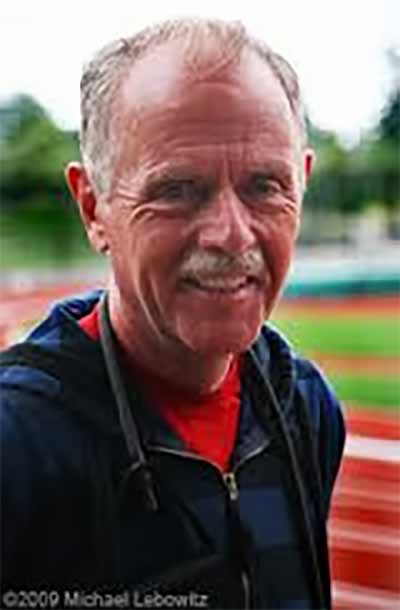
He realized that running was a “neural thing.” At that time, the importance of optimal nervous system functioning had long been neglected in traditional endurance training programs.
When did Anderson’s epiphany moment occur? The Winter Olympics of 1998, when elite distance runner Philip Boit raised eyebrows by deciding to enter the 10K cross-country skiing race.
Coaches were divided on just how well Boit would perform in this event. Some looked at his endurance running pedigree, a 28:15 for 10K, and believed his great cardiovascular fitness would be a huge benefit. Others felt Boit’s limited time training for the event—just two years—was insufficient. He would be unable to challenge athletes who had been skiing competitively since they were children when their neurological window of opportunity was wide open for developing the skill set essential for their success.
So what happened? The naysayers had it right. Boit finished dead last in 47:25.5, almost twenty minutes behind the gold medalist, Bjorn Dachlie of Norway. Analyzing his resounding failure in this event, Boit drew the conclusion that many felt was obvious from the beginning, “Skiing is not like running.”
Distance Running is a Skill Sport
Anderson explored the matter in much greater depth. “You can have a super-sized heart, lots of capillaries surrounding your leg-muscle cells, a mountain of mitochondria inside your muscles, and an enormous supply of aerobic enzymes,” Anderson said, “but you’ll never be elite athletes in any particular endurance sport unless your nervous system can control your muscular system in the most efficient manner possible.”
At the time, many considered distance running about as far from a skill sport as you could get. How did Anderson link the Boit experiment—a lesson in having a very specific and appropriate event skill set—to distance running? He concluded that the means by which sprinters achieved faster speeds also applied to distance runners.
His view was supported by the now seminal research published in the Weyand JAP2000 paper which, ironically, came only three years after Bolt’s epiphany. Researchers found that top running speeds are achieved with greater ground forces, not more rapid leg movement.
Top running speeds are achieved with greater ground forces, not more rapid leg movement. Share on XAs Anderson explained, either the leg muscles must create more propulsive force each time a foot hits the ground, or the amount of muscular force ordinarily produced by the legs must coordinate more efficiently. From this perspective, Frans Bosch’s comment that distance runners were “sprinters with bad coordination” makes Anderson’s view almost prophetic, though it was highly controversial at the time.
And what is the key to running as a “neural thing”? Distance runners need to optimize more than the essential physiological characteristics of running. Such elements as vVO2max and running economy must be combined with optimized neuromuscular capacity. To reach the highest possible level of performance, endurance athletes must also “strengthen their muscles to the greatest extent possible in a functional way,” Anderson stated.
Strength Training and Distance Running
If traditional forms of endurance training cannot optimize the neuromuscular characteristics that Anderson believed are needed to reach one’s ultimate speed and performance potential, it becomes essential to focus on strength training.
Strength training’s role in distance running, however, remains hotly debated. The good news is that fifteen years after Anderson’s epiphany moment, additional research suggests Anderson did indeed point us in the right direction.
In his recent book, Strength and Conditioning for Endurance Running, Richard Blagrove noted the following: “For you to improve at running, your nervous system is required to generate a higher level of force in a shorter period of time. The value delivered by strength training is the result of adaptations in the nervous system to improve qualities relating to force generation.”
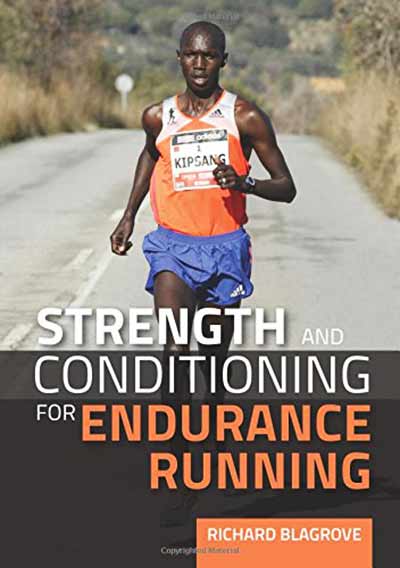
Blagrove added insight to some of the points Anderson presented in his 2001 seminar, including strength training’s role in injury prevention. “If movement/posture is poor or tissues have a low tolerance to loading, an injury is almost inevitable. If strength and conditioning exercises are executed with correct technique and in appropriate dosages, over time they will correct faulty movements/postures and cause vulnerable tissues to adapt, therefore preventing injury.”
Strength training does more than just prevent injury. Blagrove believes the simple skills that underpin running technique encourage a “longer stride length, improved running economy, stronger bones, and a faster sprint finish.”
Blagrove concluded that “following a resistance-training programme for a period of eight to twelve weeks is highly likely to benefit endurance running performance compared to only running.”
Constructing a program for distance runners, especially at the high school level, raises concerns about what needs to occur in the weight room and how much time to commit to achieve the desired ends. This is true regardless of how much we know about the value of strength training in recruiting the largest pool of motor units possible for a given task.
One of the top cross-country coaches in our state, Dan Iverson of Naperville North High School, described what he sees in a conventional weight room: tons of stuff done really poorly. He believes it’s important to “concentrate on a few things done well and consistently.”
I agree. It’s why our cross-country runners never go to the weight room, and why we focus on just a few activities. Like Blagrove, we believe that the more powerful the gluteal muscles become, the more quickly improvements in performance are likely to occur. I like the following activities for my high school distance runners: the goblet squat, the kettlebell swing, the trap bar deadlift, and for bilateral work, the single leg, split leg deadlift (which we call SLEDS).
Video 1. Although I still consider the conventional deadlift as my king of unilateral strength training—at least for my high school population—I have now moved to the trap bar deadlift. The hex or trap bar enables my runners to pull heavier loads without the typical concerns of lower back overload. The trap bar also allows for a better moment arm position, and this benefits athletes whose anatomy makes it more difficult to pull heavier loads using a conventional deadlift.
Video 2. Single-leg split-leg deadlift with kettles.
Video 3. Kettle swings.
The Value of Eccentric Loading for the Hamstrings
I also find there is great value in eccentric work for the hamstrings, especially since reading Frans Bosch’s most recent book, Strength Training and Coordination: An Integrative Approach, and working with some quality athletes in hamstring rehab. As Bosch noted, “The hamstring must be trained specifically for isometric muscle action and for recoiling elastic energy. This means that hamstring training should focus on maximal strength training at optimal length.”
As a result, we now lower the bar under control instead of following the Barry Ross deadlift protocol. One reason Ross advocated dropping the weight past the knee was concern over the eccentric loading on the hamstrings. I now see the value in this kind of loading. As Blagrove noted, “For middle distance runners, and any athlete who may include high speed running in their training programme, it is absolutely vital to strengthen the hamstrings to prevent injury.”
I made this modification after understanding the importance of eccentric hamstring strength. Initially, however, the change was an example of necessity being the mother of invention. We’ve never had an indoor training facility. For spring track, before the weather improved, we did our deadlifts in a classroom with a carpeted floor. The carpeting was glued to concrete, and dropping weights was never an issue since we didn’t have to worry about heavy weights damaging floor tiles. We no longer have access to the few remaining carpeted classrooms.
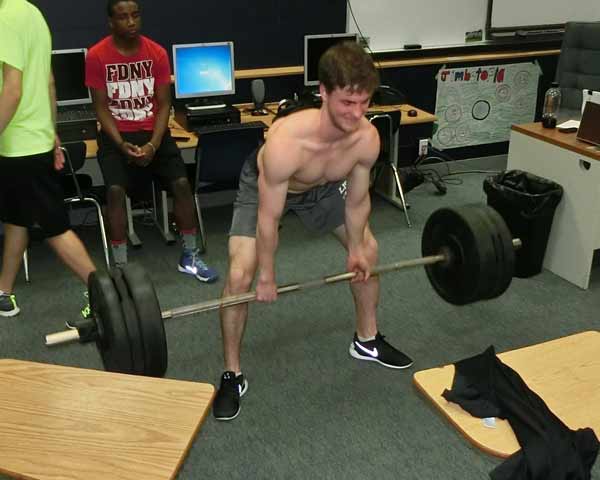
I basically found a good reason to justify a better approach. My goal is to get athletes up to 2-2.5 x bodyweight. It’s at this point that I’ve seen the most gains in speed. As a result, we pull heavier loads with fewer reps. I use the goblet squats and kettlebell swings to provide an easier and more practical transition to heavier lifting for our developmental runners.
Goblet squats, kettlebell swings are an easy, practical transition to heavier lifting for runners. Share on XConsidering we have a relatively narrow training window because of the brevity of our outdoor season, our athletes progress rather quickly. I agree with Blagrove; these improvements are related to adaptations in the nervous system. Also, lifting heavier loads teaches the nervous system to recruit more muscle fibers.
For cross-country where the weather is fairly good through late October, we simply carry our kettlebells outside along with our trap bars and bumpers. I joke with my athletes that our mobile weight room allows us to add one of Dan Johns’ favorite strength activities: the carry.
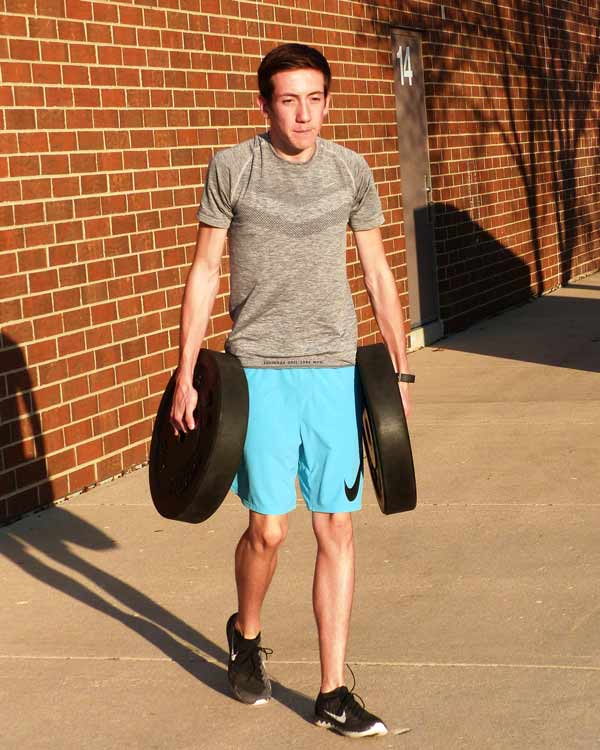
Addressing the conventional fitness centers’ approaches to strength training, Blagrove stated, “There is no need to assume that hour-long sessions in a gym are required to produce a meaningful strength and conditioning session. Dividing your exercises into training units of as little as 10-15 minutes several times per week can, over time, make a huge difference to your running.”
For those who see greater value in logging more miles instead of swinging kettlebells or pulling weight plates because these activities bear little resemblance to running, note Blagrove’s observation: “Almost all exercises that can be considered ‘conditioning’ will bear very little resemblance to the running action. However, it is important to bear in mind that to improve qualities such as posture, mobility, or the tolerance of a specific tissue to repeated loading, often a movement pattern or stimulus is required that doesn’t necessarily look or feel like running.”
Since you’re here…
…we have a small favor to ask. More people are reading SimpliFaster than ever, and each week we bring you compelling content from coaches, sport scientists, and physiotherapists who are devoted to building better athletes. Please take a moment to share the articles on social media, engage the authors with questions and comments below, and link to articles when appropriate if you have a blog or participate on forums of related topics. — SF
[mashshare]
References
- Anderson, Owen. Proc. of Running Is A Neural Thing, Edward Health and Fitness Center, Woodridge, Illinois. N.p.: n.p., n.d. Print.
- Blagrove, Richard. Strength and Conditioning for Endurance Running. Crowood Press, 2015.
- Bosch, Frans. Strength Training and Coordination: An Integrative Approach. Rotterdam: 2010 uitgevers (Publishers), 2015.
- Weyand P.G., D.B. Sternlight, M.J. Bellizz, and S. Wright. “Faster top running speeds are achieved with greater ground forces not more rapid leg movements.” Journal of Applied Physiology, 89(5) (2000): 1991-1999.

